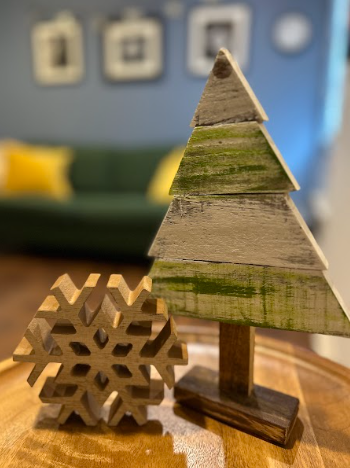
How to Set Faith-Centered Goals for the New Year
The start of a new year feels like a fresh page, a chance to focus on what matters most and decide what kind of person we want to become. For many of us, that means setting goals. Faith-centered goals go deeper. They are not just about doing more. They are about growing in ways that reflect what we believe. Whether you are focused on personal growth, building stronger relationships, or taking better care of your well-being, goals rooted in faith can help guide the way. This is especially meaningful for those searching for Christian counseling in San Antonio or simply looking for spiritual growth as a new calendar year begins.
Focus on God’s Guidance When Planning Goals
Before you put plans into motion for the year ahead, pausing to ask God for direction can make all the difference in what you choose to focus on. This might look like starting with a quiet prayer, sitting still for a few minutes, or reflecting during a peaceful walk. You do not have to do everything all at once.
Many people find comfort in reading scripture during this time. Verses about purpose, growth, or calling can help clarify the kind of goals you create. It does not need to be complicated, just a few lines that speak to your heart can make a real impact.
You might also find it helpful to talk things out with someone you trust. A pastor, faith-friendly counselor, or spiritual mentor can listen and help you explore your thoughts. Sometimes, talking about your hopes out loud helps you discover what truly matters.
When you spend time with God in this way, it can bring an overall sense of peace. It can provide reassurance that you do not need to rush or seek constant approval for your choices, but instead stay grounded in trust and faith.
Choose Goals That Match Your Values and Character
Once you have prayed and reflected, the next step is to consider what type of person you want to be, not just what you want to do. Instead of choosing goals that feel like chores, pick ones that reflect who you are and how you want to grow.
- Think about qualities you would like to strengthen, such as kindness, honesty, or patience
- Set goals that serve others, like checking in on a loved one or offering support to a neighbor
- Choose actions that bring your faith to life, not just words or promises
The most meaningful goals feel like a natural part of who you are becoming. Staying focused on values like love, humility, and gratitude helps your goals grow from a place of purpose.
As you consider these qualities, take note of moments in your daily life where your character and faith intersect. For example, maybe patience shows up as you listen carefully to a friend, or gratitude helps you appreciate the small things. By connecting your goals to your everyday experiences, you are more likely to see lasting growth and transformation.
Make Each Goal Simple and Realistic
Big goals start with small steps. Often, we create large plans that seem exciting but quickly feel overwhelming. By breaking things down, you make progress sustainable.
Try considering:
- Setting aside just 10 quiet minutes a day for prayer or Bible reading
- Finding one small way to serve someone each week
- Using a simple journal or habit tracker to monitor small, steady actions
It is natural to miss a day or feel stuck at times. Growth is not about perfection. Give yourself grace and recognize that some weeks will be easier than others. What matters most is showing up with openness.
You can make changes as you move forward. If a goal no longer feels right, there is wisdom in adjusting it. Making it simple means avoiding frustration and building a better foundation for change that will last. By keeping things realistic, you will find more opportunities for encouragement and success along the path.
Build in Quiet Time to Listen and Reset Throughout the Year
Setting goals is just the beginning. Making space to reflect and reset will keep you grounded as life changes. Scheduling quiet time each week, through journaling, prayer, or silent reflection, lets you check in on your progress honestly.
These check-ins are not meant to cause guilt. Instead, they offer a gentle chance to adjust. If a goal feels burdensome, it is okay to modify it. Your plans should give life, not take from it. Asking God for peace and guidance in these moments helps bring fresh perspective.
If you find it difficult to make this time, remember that even a few intentional moments can have a big impact. Placing short reminders on your calendar, or dedicating time before bed, helps create space to listen. This can renew your sense of purpose and help you regain momentum as you continue working toward your goals.
Stay Encouraged and Connected During the Process
We are not meant to walk this journey alone. Support from friends, small groups, or a trusted family member can keep you motivated and remind you how far you have come.
Take time to celebrate the small wins. Each step counts. Maybe you remembered to pray more often this week or responded to a challenge with extra patience. Recognizing these growth moments matters.
If you ever feel overwhelmed or unclear about your next steps, extra support can help. Professional counseling that understands the connection between mental health and faith background can provide clarity and new direction.
Being part of a supportive faith community can offer encouragement, accountability, and inspiration. Sharing your progress or struggles with someone who understands your values fosters connection and prevents you from feeling isolated on your journey. This network can lift you up, pray for you, and offer a listening ear when you need it most.
Faith and Growth With Support in San Antonio
Beginning the year with faith-centered goals brings clarity and peace. Setting aside moments to reflect, pray, and serve, even in small ways, will help you stay connected to what matters most, your faith and well-being. At La Luz Counseling, we specialize in helping people in San Antonio navigate personal and spiritual growth with a variety of approaches, including Christian counseling, anxiety therapy, and trauma care for all ages. Sessions are offered both virtually and in person, and same-week appointments are available in English or Spanish, so you never have to wait to start moving forward.
Whether your goal is to deepen your prayer routine, strengthen your family, or find new hope as you face challenges, setting purposeful goals and having ongoing support can make the journey less stressful and more meaningful.
Faith can be a steady part of your emotional and spiritual growth, and we are here to support you in a caring and centered way. Many individuals and families in San Antonio are searching for support that truly honors their beliefs, which is why we offer thoughtful guidance that includes Christian counseling in San Antonio. Whether you are facing big changes, working through struggles, or want a quiet place to focus on your goals, La Luz Counseling is ready to walk with you. Get started with us today.





Recent Comments